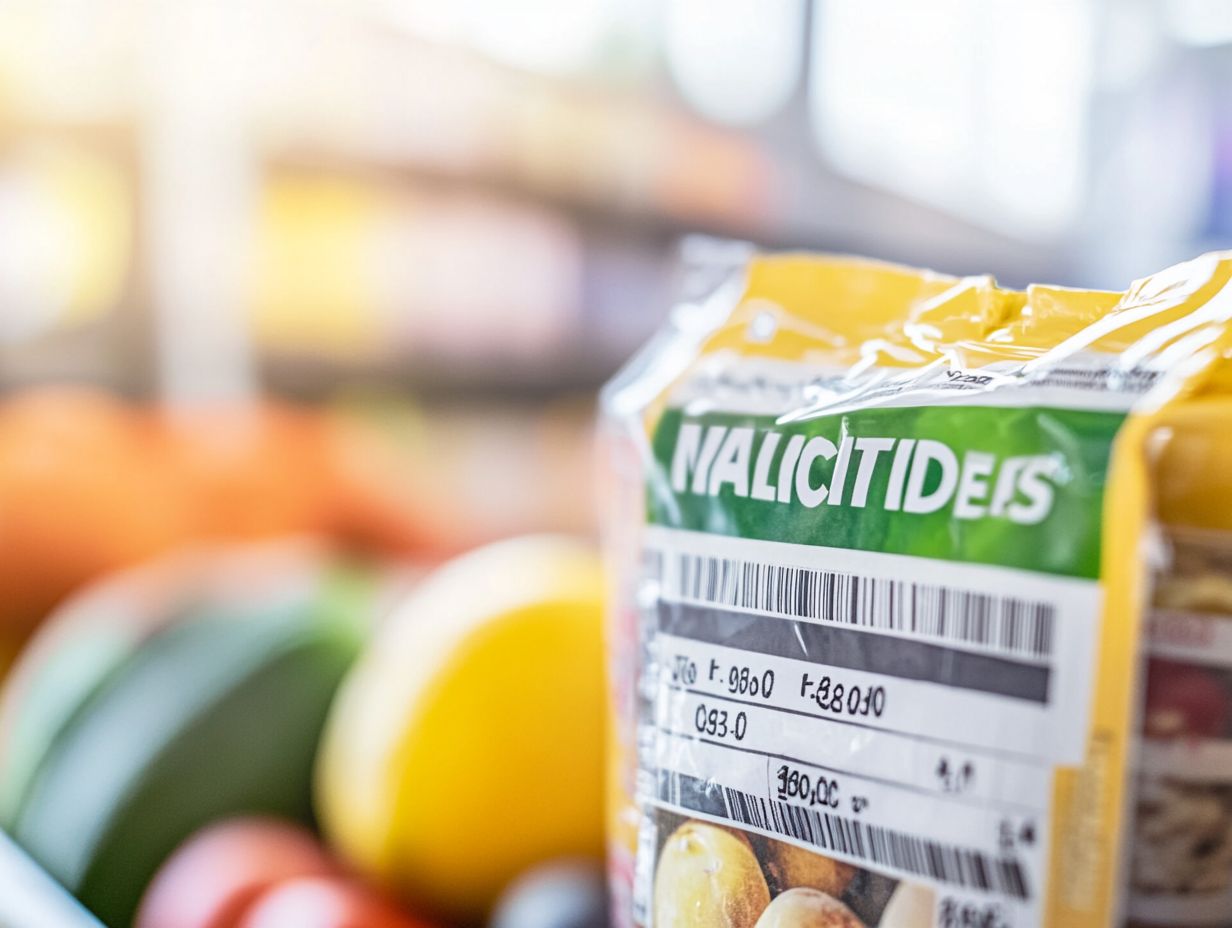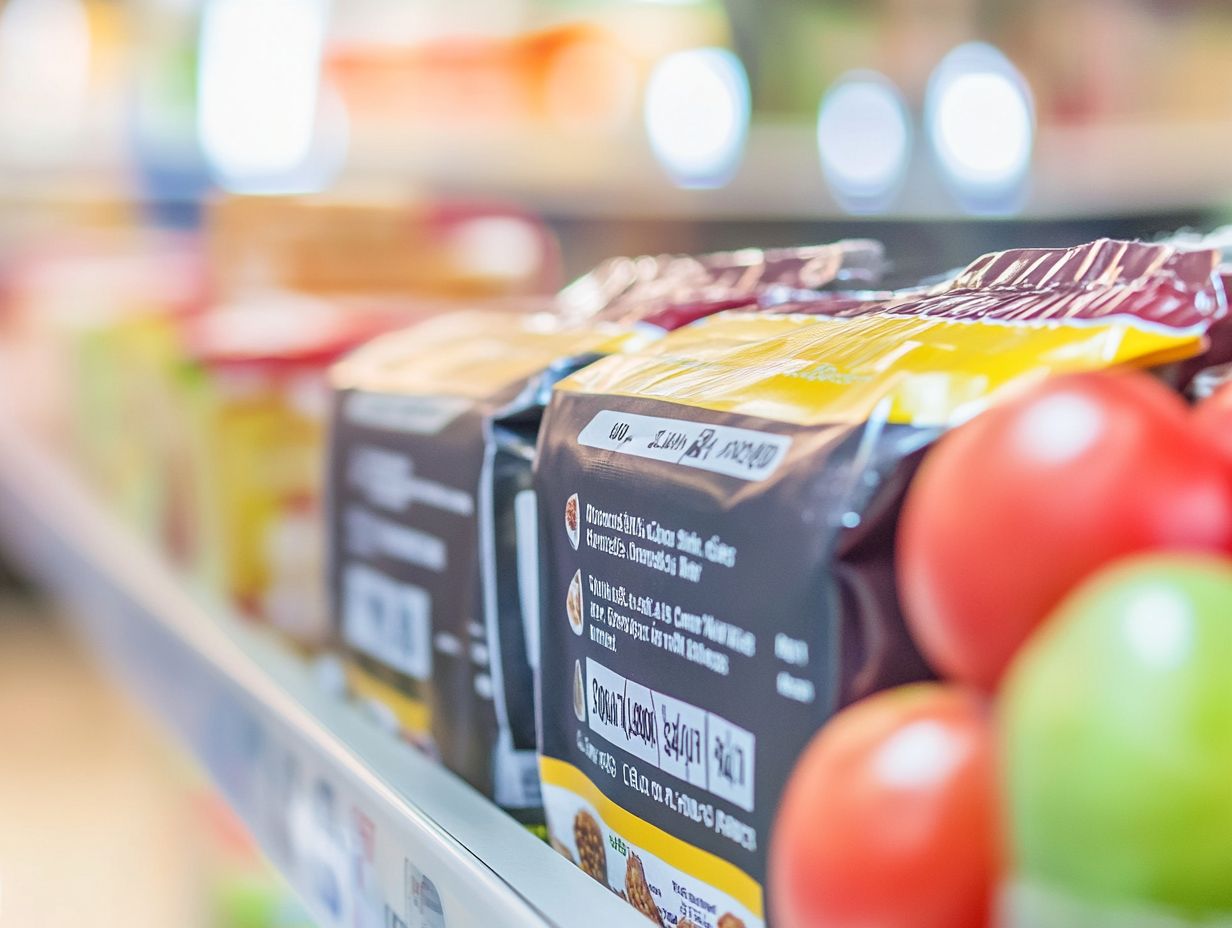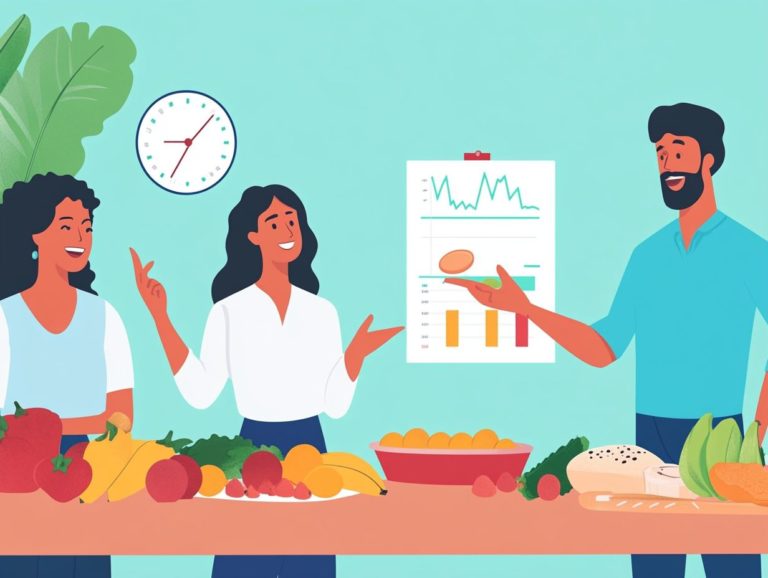The Truth About Nutritional Labels
Navigating the world of nutritional labels can seem daunting, yet understanding their details is essential for making informed food choices. This article breaks down the information on these labels and highlights key components that deserve your attention while clearing up common misconceptions.
You ll discover why nutritional labels are vital for your health and how they can inform your food choices. You will also get practical tips to help you use this information effectively, enhancing your overall well-being.
Together, let’s reveal the truth about nutritional labels and empower your journey towards better health!
Contents
Key Takeaways:

Nutritional labels provide important information about food contents and serving sizes.
- Key components to look for include serving size, calories, and nutrients like fat, sodium, and sugar.
- Understanding nutritional labels can promote a healthier diet and improve overall health.
Understanding Nutritional Labels
Understanding nutritional labels is essential for making informed dietary choices, as they provide valuable insights into the foods you consume.
In the United States, these labels are regulated by the Food and Drug Administration (FDA), ensuring accurate information about the health implications of your food purchases.
By examining nutritional labels, you can effectively monitor the calories you eat and identify processed items that might contribute to health issues like obesity and type 2 diabetes.
This knowledge empowers you to advocate for better food options!
What Information is Included?

Nutritional labels typically present essential information, including:
- Nutrition facts
- Calories
- Sugar content
- Sodium levels
- Health claims
Among these components, the serving size is crucial; it defines the amounts listed for each nutrient, allowing you to assess your intake accurately. The calorie count shows the energy provided by the food, while fats both saturated and trans help you make heart-healthy choices.
Sugars, whether added or natural, inform you about the food s sweetness and its potential impact on your blood sugar levels. Sodium content is particularly important for those monitoring heart health, influencing overall dietary decisions.
Health claims like “low-fat” or “heart-healthy” offer guidance, but a deeper understanding of specific nutrient claims will help you make informed decisions about your eating habits.
Interpreting Nutritional Labels
Interpreting nutritional labels plays a crucial role in your health journey. By understanding these labels, you can make informed choices about processed foods and navigate the often complex presentations crafted by food companies.
This knowledge enables you to select options that truly align with your wellness goals.
Key Components to Look For

When examining nutritional labels, prioritize key components such as:
- Sugar content
- Sodium levels
- Health claims
These can significantly influence your dietary choices and overall well-being. For example, excessive sugar intake can lead to health issues, including obesity and diabetes, making it crucial to scrutinize the amounts on labels.
High sodium levels are linked to an increased risk of hypertension and heart disease, which requires careful consideration.
When you encounter health claims like “low-fat” or “sugar-free,” it’s important to look beyond the surface. Examine the broader context of nutrient content to ensure these claims don t hide unhealthy ingredients.
By carefully assessing both the quantity and quality of nutrients, you can make informed choices that align with your health goals. Start reading labels today to take control of your health!
Common Misconceptions about Nutritional Labels
Common misconceptions surrounding nutritional labels can easily lead you to underestimate the health impacts of ultra-processed foods.
This misunderstanding contributes to the rise of health problems from poor eating habits and creates confusion when it comes to making informed, healthy choices.
Debunking Myths and Misunderstandings

Debunking myths and misunderstandings about nutritional labels is crucial for enabling you to navigate the often misleading health claims made by food companies, as outlined in understanding nutritional labels in dietary guidelines.
In today s market, brands frequently boast about being low-fat or sugar-free. However, you might find yourself overlooking the bigger picture presented in the nutrition facts. These labels can be cleverly designed to distract from unhealthy ingredients or higher calorie counts.
Just because a product is labeled as organic doesn t automatically make it the healthiest choice available.
When you learn how to read these labels, you unlock the power to make better food choices that align with your health goals.
The Importance of Nutritional Labels
Nutritional labels are essential tools for consumer advocacy. They enable you to make informed choices that profoundly influence your health and reduce the risk of diet-related diseases.
Understanding these labels helps you navigate your dietary landscape with confidence and intention.
How They Affect Your Health and Diet
Nutritional labels significantly impact your health and diet by providing essential information that guides your choices, influencing caloric intake and the risk of health problems from poor eating habits.
These labels help you understand the contents of the foods you consume and play a crucial role in your dietary decisions.
When you re informed about portion sizes, sugar content, and saturated fats, you can select healthier options that lower your chances of developing serious health conditions like obesity and hypertension.
This awareness encourages a mindful approach to eating, leading to improved overall wellness and long-term health benefits.
By engaging with nutritional labels, you take charge of your dietary habits, steering your lifestyle towards balance and reducing health risks.
Tips for Using Nutritional Labels Effectively
Utilizing nutritional labels effectively entails a few key strategies that enable you to make informed choices about the food products you select, ultimately fostering improved health outcomes.
Start using these tips today for a healthier tomorrow!
How to Make Informed Choices Based on Labels
Making informed choices based on nutritional labels means truly understanding the information presented and recognizing how it relates to your health and the risk of diet-related diseases.
To effectively utilize these labels, it s essential to compare similar products. Take a close look at their ingredient lists to identify items that may contain unhealthy additives or excessive sugars.
Understanding serving sizes is also key. Many people underestimate how much they actually eat, leading to unintentional overconsumption of calories and sodium.
Understanding these aspects helps you cultivate healthier eating habits. Start cultivating healthier eating habits today! This awareness enables you to select foods that nourish your body, ultimately reducing the risk of chronic health issues. Don t wait to make better choices! Understanding labels can transform your shopping experience.
Frequently Asked Questions
What information is included on nutritional labels?
Nutritional labels include information about serving size, calories, and nutrients such as fat, carbohydrates, protein, vitamins, and minerals.
Are nutritional labels accurate?
Nutritional labels are generally accurate, but their accuracy can vary based on factors like the accuracy of manufacturer testing, rounding rules, and regional differences in ingredient sources.
How do I know if a food is healthy based on its nutritional label?
The best way to determine if a food is healthy is by looking at the ingredients list and the nutrient breakdown. Choose foods with whole, unprocessed ingredients and a balanced nutrient profile.
Are the amounts listed on nutritional labels for the entire package or per serving?
The amounts listed on nutritional labels are typically for one serving, which is often smaller than the entire package. Be sure to check the serving size to accurately assess the nutritional information for the amount you are consuming.
Can I trust the % Daily Value listed on nutritional labels?
The % Daily Value (%DV) is a general guide based on a 2,000 calorie diet and may not be accurate for everyone. It is best used as a reference point and should not be the sole factor in determining the healthiness of a food.
Do all foods have to have a nutritional label?
Most packaged foods are required to have a nutritional label, but there are some exceptions such as raw fruits and vegetables, small businesses, and foods prepared and sold in-store, like bakery items or deli meats.






